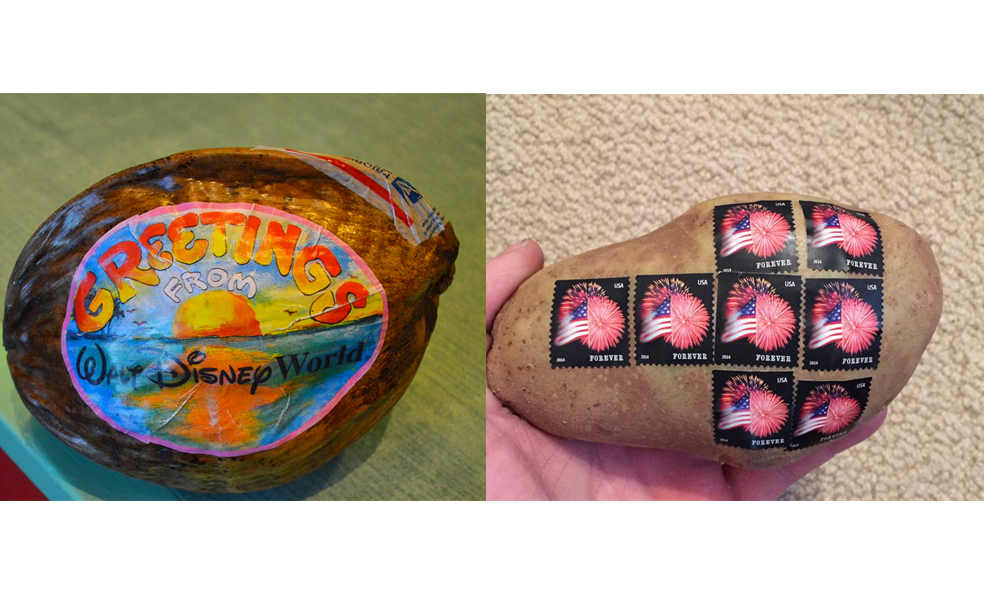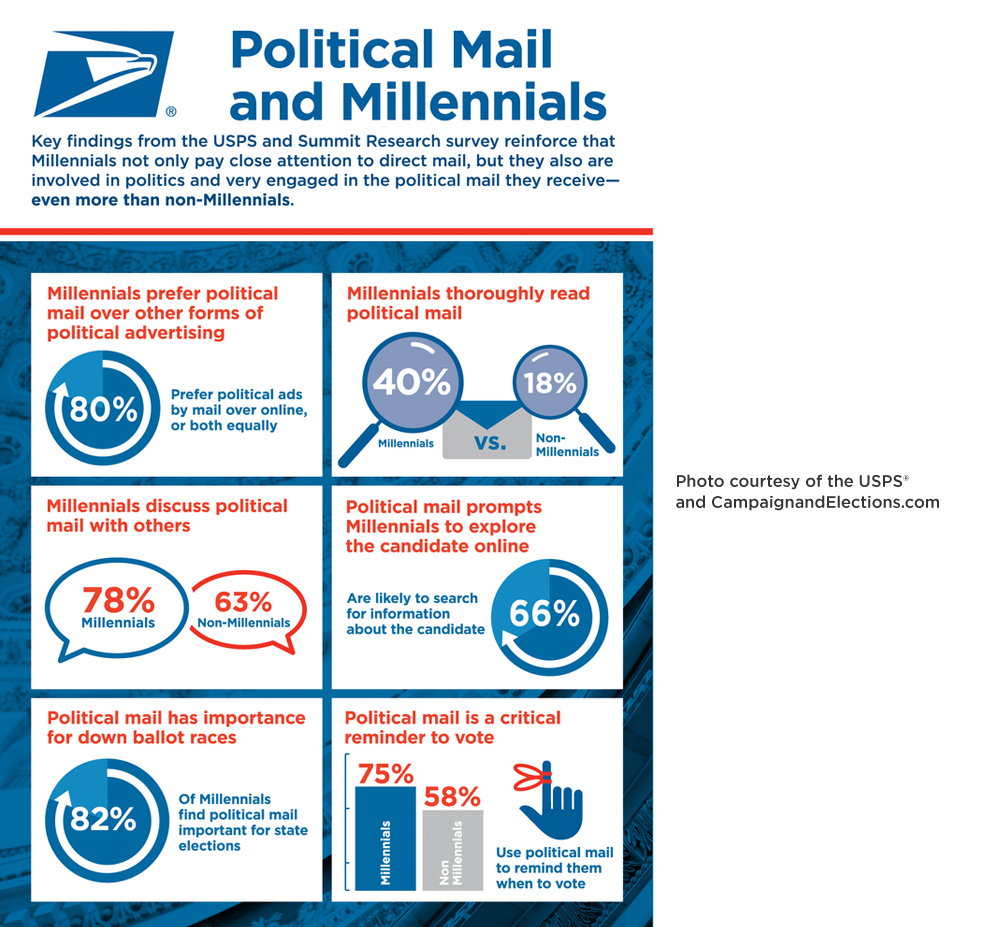EDDM® or Every Door Direct Mail® works as a direct mail approach to your marketing efforts. Before we get into the hows and whys, let’s look at the history, first.
Started in April, 2011, USPS® launched Every Door Direct Mail® (EDDM®) as an easy, cost-effective way to reach an entire neighborhood or ZIP code. There’s no mailing lists or permits. It’s not necessary to know the names or addresses of your recipients in your target neighborhood, but, if you’re looking to target a specific demographic, there are filters that can help you choose your target areas even more strategically. With mail pieces offered at discounted postage rates, it’s a perfect opportunity to tell your story without breaking your budget.
In comparison, direct mail allows a much more targeted approach. You’ll need to purchase a mailing list and the postage will be higher than EDDM®. Both have their pros and cons, but both are much more effective than email. Let’s take a look now at the stats.
Overloaded Inbox Fatigue
How many emails do you get per day? Then how many of those do you actually read? If you’re like most people, you receive an enormous amount of emails and you probably read a fraction of those. News, updates, offers, personal communication, etc. can clog our inboxes. Although nice and appreciated, you just don’t have the time to read through those emails and respond.
How does direct mail compare? 77% of consumers sort through their physical mail as soon as the get it with 98% looking forward to checking their daily mail. Compare that to 43% enjoy receiving an email.
Personal Touch
Because you can’t feel or smell an email, direct mail is powerful way to reach your customers. Some stats to confirm direct mail versus email:
– Average response rate: 4.25% vs 0.12%
– Immediate action: 79% vs 45%
– Brand recall: 75% vs 44%
– Generate customers: 34% vs 24%
You’d Be Surprised At What You Can Mail
1) Write address.
2) Adhere postage.
3) Give someone the best damn day ever.
These odd items are just as easy to mail as it is to ship a standard package or box. Just write the address clearly with a permanent marker or create a proper address label and adhere sufficient postage (dependent on how much the item weighs and where you are sending it to), and the USPS® will literally mail it for you!
– A flip flop
– A lime
– A coconut
– A potato
– A box of candy
– A seashell
– A pillow
– A sombrero
– A rock
– A brick
– An inflated beach ball
– A piñata
– A frisbee
People Notice (And Act On) It
Direct mail cuts through the clutter, offering the opportunity to put your advertising piece right in your customer’s hand.
– 92% of shoppers say they prefer direct mail for making purchasing decisions.10
– 70% are curious to find out what’s in their mailbox.9
– 74% always or sometimes notice advertising in direct mail.9
– 42% of recipients read or scan mail pieces.4
– Direct mail household response rate is at 3.7% (compared to .2% mobile, .1% email, .1% social media, and .02% internet display).4
– Direct mail median household ROI is at a median of 18-20%.4
– At 5.0%, oversized postcards have the greatest response rate over other mediums (followed by postcards at 4.25% and dimensional mailings at 4.0%).4
Women Have the Purchasing Power
Women are in the majority in purchasing and these stats confirm they are a highly sought after marketing segment.
– 91% of mail is picked up by the same person each day; 80% of them are women.4
– 80% of those picking up mail (men and women alike) are the primary grocery shoppers.4
– Women make more than 80% of all purchasing decisions.5
– Women make more than 85% of all household purchases.5
– 22% of women shop online at least once a day.5
Millennials Love It
92 million Millennials (anyone born between 1980-2000; a member of Generation Y) will have a cumulative $1.4 trillion in spending power by 2020.
– 36% of people under 30 look forward to checking the mail each day.1
– At least 42% of Millennials prefer direct mail political ads over online ads, with 38% favoring both equally.2
– 66% are more likely to remember to use a voucher if they have a physical copy to carry around.3
– 23% bought or ordered something as a result of receiving direct mail in the last 12 months.3
– 77% of Millennials participate in loyalty reward programs.
It’s Easily Integrated
62% of people are always addressable (meaning they own and use at least three web-connected devices, go online multiple times per day, and go online from multiple physical locations). Putting a physical mail piece in front of your customers gives them a chance to collect more information and pushes them toward your website on any one of those devices.
– 44% of marketers using three of more channels for their marketing efforts.4
– Retailers have seen a $21 million dollar difference in online sales per million site visitors between those who had received a catalog at their home address and those that had not.6
– For those same retailers, that translated to 163% lift.6
– Bobonos customers who received a catalog spend 1.5 times more than new shoppers who didn’t receive a catalog first.7
– Boden customers spend up to 15 to 20 minutes with their catalog, vs. an average of 8 seconds for an email and 5 minutes with their iPad app.7
– 10.6 million catalogs were mailed in 2015.8
– 2.5 billion coupons were redeemed in 2015.8
– 51% prefer companies to use a combination of mail and email when communicating with them.9
When considering a marketing campaign, direct mail should always be in the conversation. The calls that “print is dead” simply are not true. Social media, email and digital marketing are extremely valuable and important to your success. They should be integrated, however, within a strong and focused direct mail and/or EDDM® effort to reach the highest number of customers possible.
:::::
Thanks to Compu-Mail for compiling this information.
1. 2015 Gallup Poll
2. Why Direct Mail Still Influences Millennials: 7 Takeaways for Campaigns
3. MarketReachUK, “The Seven Life Stages of Mail”
4. 2015 DMA Response Rate Report.
5. Sheconomy, Marketing To Women Quick Facts
6. ComScore study
7. Wall Street Journal
8. 2016 DMA Statistical Fact Book
9. Canada Post
10. DMR Report





